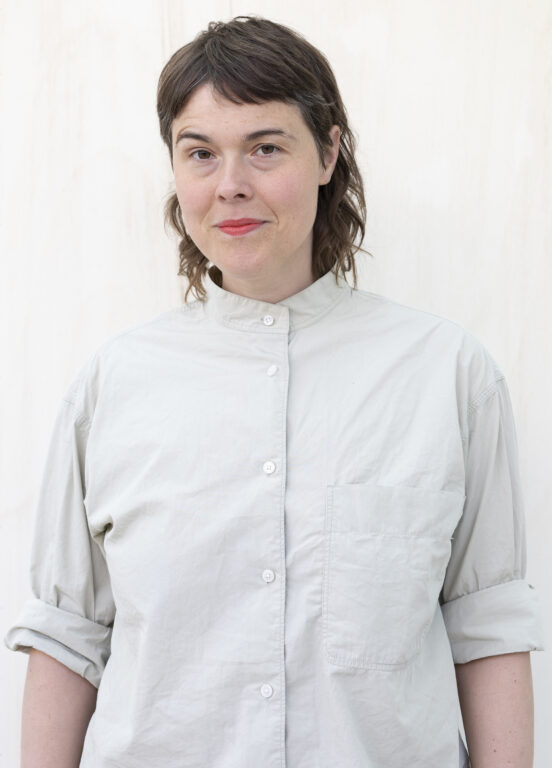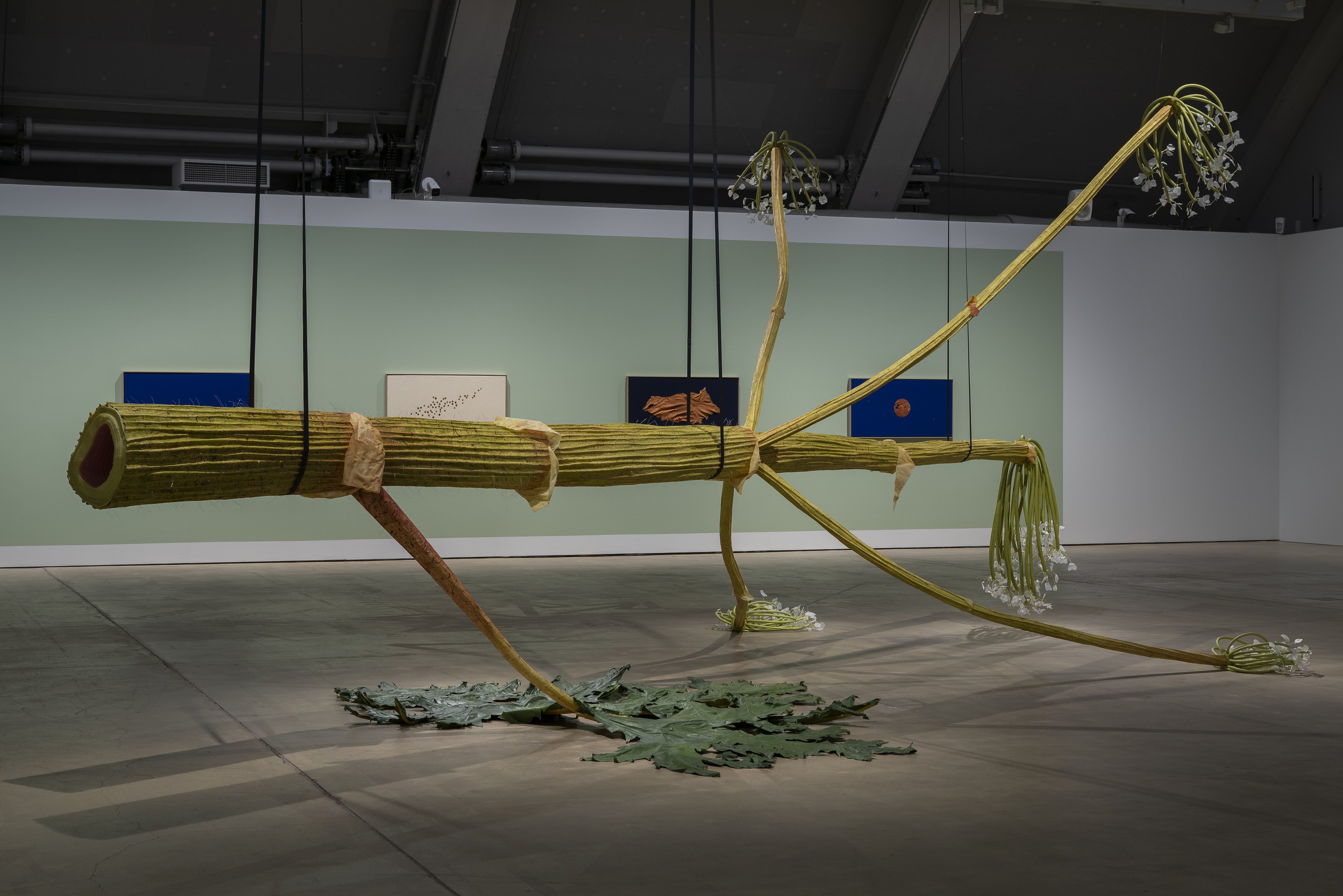
Ingela Ihrman’s (b. 1985) practice draws on interspecies entanglements, scientific findings, and her personal experiences, feelings and desires.
She critically examines the way humanity simultaneously romanticizes and exploits nature, as if oblivious to our own inseparability from nature’s webs of interdependency.
The artist works in the mediums of sculpture, video, installation, text and performance, often appearing in self-made sculptural costumes, whether as an otter, a frog, a giant Amazonian waterlily or a fig. By donning costumes, she literally slips into the skin of other creatures and explores the limits of her own body.
Photo: Helene Toresdotter

Ingela Ihrman: The Giant Hogweed, 2020. Helsinki Biennial 8.6.–21.9.2025, HAM Helsinki Art Museum. Photo: HAM / Helsinki Biennial / Sonja Hyytiäinen
The Giant Hogweed, 2020
The Stegocephalia from Bjuv, 2013
Artwork location: HAM Helsinki Art Museum
The Giant Hogweed in HAM’s south gallery is an eight metre-tall representation of the herbaceous plant Heracleum mantegazzianum. Giant hogweed is native to the mountainous western Caucasus region of Eurasia. It was introduced to Europe and North America in the 19th century as a horticultural plant, but is now classified as an invasive species that poses a threat to agriculture and ecology. The plant is also harmful to human health: its phototoxic sap causes blistering and scarring, and its blooms can cause shortness of breath in sensitized individuals. Ihrman compares the giant hogweed’s ability to rapaciously devour landscapes to the way a person’s mind and body can be utterly consumed by love and desire.
Also forming part of her body of work is the erotic short story Green Fingers, which is available for visitors to read in the exhibition space. The display is completed by The Stegocephalia from Bjuv, an installation portraying an amphibian fossil found in a coal mine in the village of Bjuv in southern Sweden. Ihrman’s costume representing the amphibian reflects on its habitat 200 million years ago.
The artwork production is supported by the Swedish-Finnish Cultural Foundation.